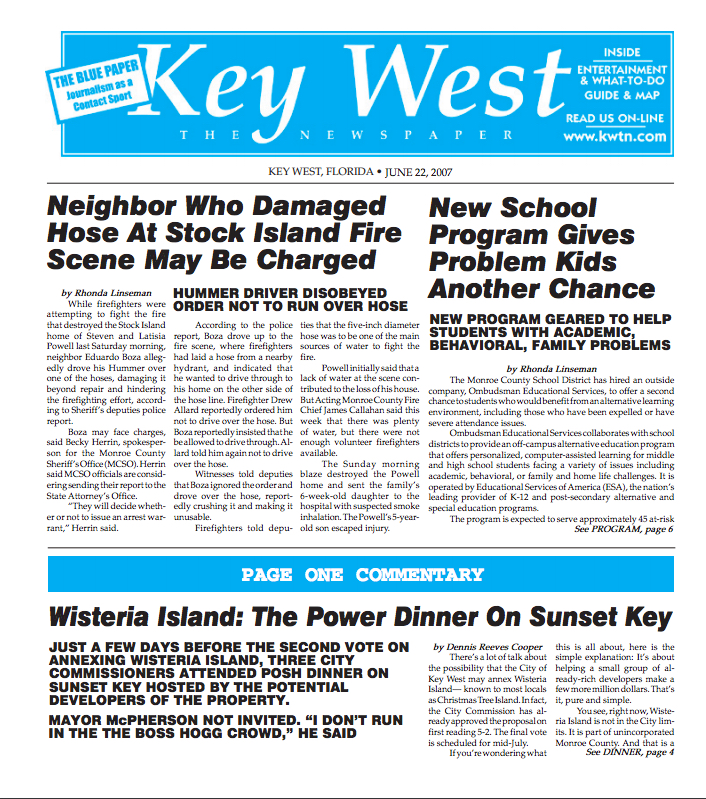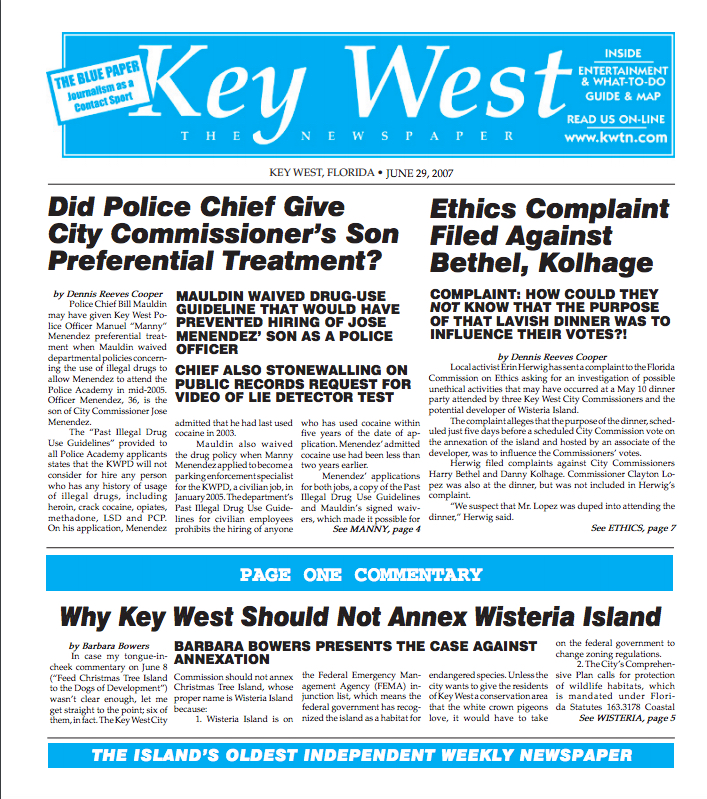PEARY COURT REFERENDUM: Why Did it Fail?
Commentary by Naja and Arnaud Girard…….
Over 56% of voters said “No” to the purchase of Peary Court in spite of the housing crisis. The $55 Million project to save 157 units rented at $2400/month appeared an uphill battle from the start.
“Jimmy [Commissioner Weekley] is saying he prays that Peary Court tenants will not be evicted by the next owner,” says citizen advocate Christine Russel, “I think Jimmy and others who pushed this should pray the mysterious next owner pays at least $55 Million and that should not include the land for those 48 units that we were not buying.”
Weekley had formed a Political Action Committee funded by local developer Ed Swift. They paid for flyers, advertisements, and a poll, the results of which, interestingly enough, were never published.
“I think there are questions about the size of the property…” Mayor Cates admitted on US1 Radio Tuesday morning. “There are a few loose ends.” But he insisted people should “trust their Commissioners (…) [who] will work out all these details for the benefit of the community before they make a purchase.”
“But that is the point,” says Russel, “We don’t trust them. We don’t trust the City when it comes to large investments. Do you remember the Glynn Archer City Hall that was going to cost under 7 Million and now will cost nearly 19 Million?”
Trust was in short supply on Election Day. People voted “No” for an array of reasons. Some told us they didn’t want the City to subsidize workforce housing for the benefit of “cheapskate” local employers, at least not to the tune of $55 Million.
Many were concerned with the appearance of impropriety when Commissioners suggested the City buy Peary Court for nearly twice the price it sold for only two years ago. Commissioner Kaufman reasoned that money could be better spent building smaller, cheaper units rentable at lower prices.
Commissioner Romero brought up more and more questions about how much land would come with the buildings, the cost of repairs and maintenance, and the financing of the project.
“In the end,” said Russel, “the Commission tried to derail the charter provision that requires a referendum and it backfired.”
Why the purchase had to go to referendum may be of interest to readers.
CLICK ON IMAGE FOR FULL June 22 2007 ARTICLE
It was May 10, 2007. The wannabe developers of Wisteria Island were wining and dining three City Commissioners on Sunset Key, among them sitting Commissioner Clayton Lopez. That was just 5 days before the City was to decide whether to annex Wisteria Island; a very controversial issue. The dinner venue was far from the public eye but they were ratted out by a waiter who alerted The Blue Paper.
CLICK ON IMAGE FOR FULL June 29, 2007 ARTICLE
Key Westers were outraged. A complaint was made to the State’s Ethic’s Commission. A small group of activists including Russel and former County Mayor Shirley Freeman joined a grassroots movement to divest the Commission of the right to purchase or annex land without the approval of the voters. Through a landslide referendum, what was then called, the Wisteria Island Charter Amendment, was adopted. Due to that 70% vote in favor, Key West’s city charter now requires a vote of the people to ratify or reject any purchase or annexation of land by the City.
“And that is what was wrong with the Peary Court deal,” says Russel, “people couldn’t stomach that they were supposed to say ‘yes, buy Peary Court’ and then Commissioners would go ‘work out the details’ and the price and even the size of the land being purchased on their own with the special interests involved. And I think that is one of the main reasons people said ‘No’.”
“The best thing about the [Peary Court] deal” Commissioner Kaufman said last December, “is it has brought attention to the affordable housing crisis.”
Rather than spending $55 Million to “save” 157 $2400/month rental townhomes with carports and sprawling greens from possible redevelopment, the City could use that $12.2 Million in Land Authority funds that it still has to build desperately needed smaller, less expensive units affordable for the majority of the local workforce.
The City could also begin regulating to limit gentrification, by prohibiting new-gated communities, All 700 or so remaining building allocations could be reserved for low and median-income affordable housing. Commissioner Kaufman floated that concept during Wednesday night’s City Commission meeting. Homeowners could be allowed to add a legal efficiency when feasible. Commissioner Kaufman has also set in motion his proposal to work with the US Navy to refurbish and open the 166 vacant units on Sigsbee Island. New units could be built on government owned land at Poinciana, Trumbo Road, Truman Waterfront, or on Caroline Street. The City could also, finally, approve former Commissioner Johnston’s proposal to have the City require 30% affordable housing for large-scale redevelopment projects. The City could protect trailer parks and RV parks. Incentives could be offered to landlords in exchange for affordable deed restrictions, such as offering tax abatements.
It will be interesting to see how the Commission’s newfound passion for the living conditions of Key West workers will play out in the future.
DID YOU LIKE THIS STORY? SUPPORT THE BLUE PAPER
Help us continue to bring you local investigative journalism…







There were so many untied down (fuzzy to non-existent) moving parts in front of the voters, that there was no way they could make an intelligent decision. They were just as in the dark about what really was going on as the six elected officials who voted to put it out to the voters via required referendum were in the dark. Only City Commissioner Margaret Romero voted against putting the referendum on the ballot, and of the seven elected officials only she continued to try to clear up the fuzz, a mission impossible, and oppose the referendum. Commissioner Sam Kaufman publicly stated he was not disclosing how he would vote on the referendum. There is no doubt in my mind that the City Commission would have bought Peary Court, if there not had been the requirement in the City Charter that the voters had to approve the purchase. I wrote an article yesterday at my website about why the referendum failed, and who was responsible for the failure: both the people pushing for it to be passed by the voters, the Key West Citizen for not going about it like the blue paper went after it, and what I call The Resistance, whom I describe in some detail in the article, which I named “Key West boondoggle politics – or, how The Resistance defeated the Communist Party’s the city should buy Peary Court apartments workfarce housing referendum; the affordable housing church of Naja Girard; how to actually do something about Key West’s acute affordable rental housing crisis; and how the city can use reverse NIMBY to protect Peary Court from developers”, which you should be able to get to by clicking on this link: http://goodmorningkeywest.com/?p=36129
It failed because Peary Court would have failed. I am surprised that even 10% voted yes.
Nobody will pay them 55 mil so they either lower price or doze it down.
The buildings at best are worth $100 K, What was of value is the ground and not all of that was included. Why buy land when you already own more than you need.
Now get busy and build some cheap affordable places for people making $10 an hour.
The question shouldn’t be “Why Did it Fail?” Instead, it should be “Why did 44% of the Key West voters vote YES?”
I suspect that 44% are questionable voters. Just maybe paid for voters. Dam few had anything from it passing unless they already live in it. With the amount of corruption in KW I trust nobody.